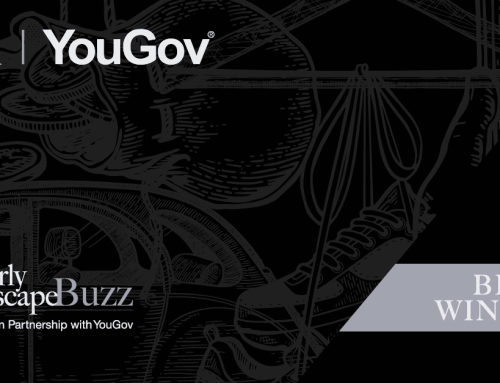Content Consumption Preferences Across South Africa
Content consumption in South Africa presents a unique blend of digital and traditional media, reflecting the diverse and dynamic nature of its audience. Streaming services, particularly those offering local content, have gained significant traction, resonating culturally with viewers and maintaining a strong competitive edge.
Social media platforms like WhatsApp, Facebook, and Instagram dominate daily usage, significantly influencing consumer behaviours and trends.
Despite the rapid growth of digital media, traditional television remains a staple in South African households, bolstered by the popularity of local programming that continues to engage a broad audience.
Radio, with its ability to reach diverse listeners, fosters community dialogue and shared experiences, highlighting its enduring relevance. While print media faces challenges in the digital age, it still holds credibility through trusted editorial content and continues to be a reliable source of information for many.
Understanding these evolving content consumption preferences provides valuable consumer insights into South Africa’s media landscape, offering a comprehensive view of how audiences engage with various media formats in their daily lives.
Streaming Services
Streaming services have become an integral part of content consumption in South Africa, reflecting broader global trends while also catering to unique local preferences and cultural nuances.
These are the factors that influence South Africans’ choices when it comes to their favourite streaming services:
Subscription Costs
Subscription costs remain a significant factor, with services like Netflix, Showmax, and Amazon Prime Video offering tiered pricing to accommodate varying budgets. This pricing strategy is crucial in a market where economic disparities are prevalent.
Device Compatibility
Device compatibility is another key aspect influencing streaming habits. The widespread use of smartphones, tablets, and smart TVs ensures that consumers can access their favourite content on multiple platforms, enhancing convenience.
However, data consumption poses a challenge, as high-quality streaming requires substantial bandwidth, often leading to increased costs for users. This has driven a reliance on Wi-Fi networks and data-saving features provided by streaming platforms.
Local Content and Competitive Edge
The allure of popular shows such as ‘Blood & Water’ and ‘Queen Sono’ from Showmax highlights the growing demand for local content that resonates with South African audiences.
In this context, the availability of local content not only fosters a sense of cultural identity but also provides a competitive edge to streaming services.
Social Media Usage
In South Africa, social media usage is deeply woven into the fabric of daily life, reflecting a complex interplay of cultural, social, and economic factors. With 26 million active users, accounting for 42.8% of the population, social media platforms such as WhatsApp, Facebook, and Instagram dominate the digital landscape.
Daily Engagement and Influencer Marketing
The average South African spends nearly 3 hours and 41 minutes daily on social media, a testament to its embedded role in online habits. Influencer marketing has emerged as a potent force, with local influencers wielding significant sway over purchasing decisions, thereby driving social media trends.
According to YouGov profiles, (in partnership with KLA), a significant majority (73.6%) of South Africans agree that social media is changing the way they interact with brands. This highlights the growing importance of social media platforms in shaping consumer behaviour and brand perception.
Social Media as a News Source
This trend underscores the critical need for brands to maintain a robust online presence and to foster authentic connections with their audience. Moreover, social media serves as a primary source of news and information, which highlights its dual role in both daily life and the economic sphere.
The above data alone highlights the importance for brands to invest in social media strategies and influencer partnerships to effectively reach and influence their audience.
Television Trends
While social media dominates the digital landscape in South Africa, television remains a popular source of news. YouGov Profiles highlights that 58.54% of South Africans prefer television for their news. This coupled with the fact that 50.5% of South African respondents consider themselves TV addicts, indicates that traditional media still holds significant influence.
The South African TV broadcasting market is projected to grow substantially from 2018 to 2028, driven by increased TV penetration, a rise in pay TV subscriptions, and high demand for local content.
This growth underscores the enduring relevance of television alongside the rise of digital media.
Demographic Preferences
Channel preferences vary significantly across different viewer demographics. Older audiences tend to favour established national broadcasters, while younger viewers increasingly lean towards streaming services. This divergence in preferences highlights a generational shift in viewing habits.
Advertising Trends
Advertising trends on television are also evolving. Brands are increasingly targeting specific demographics with tailored advertisements, leveraging prime-time slots to maximise reach and impact. Advertisers are keenly aware of the high engagement levels during popular local content viewing, making these slots highly coveted.
Cultural and Social Impact
Contextually, television continues to play a crucial role in the media ecosystem of South Africa. Despite the rise of digital platforms, the enduring appeal of television, particularly for local content, underscores its importance in the cultural and social fabric of the nation.
Radio Listenership
YouGov Profiles shows that radio continues to be a significant source of news for 48.34% of South African respondents, underscoring its ongoing relevance in providing news updates to the public.
This enduring popularity highlights radio’s vital role in South Africa’s media landscape, deeply ingrained in the daily routines and cultural practices of its diverse population.
Local radio stations serve as essential touchstones for communities, offering a blend of music genres, news, and talk show preferences that reflect the rich tapestry of South African society.
Drive Time and Talk Shows
The rise in podcast popularity has not diminished the appeal of traditional radio; instead, it complements it, providing audiences with more flexibility in content consumption.
Analytically, drive-time shows capture a significant portion of listenership, as they cater to commuters seeking entertainment and information during their daily travels.
Community Dialogue and Cultural Connectivity
In addition, talk shows on local radio stations often address pertinent social issues, fostering a sense of communal dialogue and cultural connectivity.
Contextually, radio in South Africa transcends mere entertainment; it is a medium that unites disparate groups through shared experiences and collective narratives. Whether through the diverse array of music genres or the intimate nature of talk show discussions, radio remains a dynamic and integral part of South Africa’s content consumption habits.
Print Media Engagement
Despite the surge in digital media, print media remains a critical pillar of content consumption in South Africa, reflecting the country’s rich cultural heritage and diverse readership. Magazine readership and newspaper circulation continue to enjoy significant engagement, driven by a unique blend of local publications and global influences.
This sustained interest is partly due to the deep trust readers place in the editorial content, which is often perceived as more credible compared to digital sources.
Reader Demographics and Industry Challenges
Reader demographics reveal a broad spectrum of engagement, spanning urban and rural areas, and encompassing various age groups and socioeconomic backgrounds.
However, print media faces challenges such as declining print advertising revenues and the shift towards digital subscriptions. To combat these issues, industry innovations have emerged, including hybrid models that integrate digital and print offerings.
Adaptability and Resilience
Despite these hurdles, local publications maintain a strong foothold by catering to niche interests and regional concerns. Moreover, the resilience of print media is bolstered by its ability to adapt, as evidenced by the diversification of content and targeted marketing strategies.
This adaptability ensures that print media remains an indispensable component of South Africa’s media landscape, balancing tradition with modernity. For further insights into the most popular websites in South Africa, refer to Most popular websites in South Africa.
News Consumption
News consumption in South Africa has seen significant growth, especially across digital platforms. With increasing internet penetration and mobile connectivity, more South Africans are turning to online news sources for their daily updates.
This shift is evidenced by the surge in audience numbers across news sites, as reported by the IAB South Africa’s Measurement Dashboard. The preference for digital news is driven by the accessibility and immediacy it offers, allowing users to stay informed in real-time.
Sources of News – General
YouGov Profiles asked 6310 South African respondents what channels they used to access their news:
- Television: Television remains a popular source of news for 58.54% of respondents, suggesting that traditional media is still a significant source of information.
- Social Networks: Close behind television, 57.32% of respondents get their news from social network websites, highlighting the critical role of social media in news dissemination.
- Radio: Radio is a source of news for 48.34% of respondents, indicating its continued relevance in providing news updates to the public.
Digital vs. Traditional News Outlets
Despite the rise of digital news, traditional news outlets still hold substantial influence, particularly among older demographics. These outlets are trusted for their in-depth reporting and editorial standards.
The diversification of news consumption habits underscores the importance of a multi-platform approach to reach a broad audience.
Conclusion
The digital content consumption landscape in South Africa demonstrates a multifaceted and highly engaged audience. Streaming services, social media platforms, television, radio, and print media each play distinct roles in the daily lives of South Africans.
The high internet penetration and mobile connectivity rates underscore the importance of a versatile and integrated approach for brands aiming to capture and sustain consumer interest. Understanding these preferences is crucial for effective engagement in South Africa’s dynamic digital ecosystem.
Methodology
Profiles: Segmentation and media planning tool. YouGov Profiles makes it simple to find and understand the audience that matters most to you. With data collected daily, it gives you the power to build and customise a portrait of your consumers’ entire world with unrivalled granularity. More than 12,500 variables are available in South Africa.
Dataset: 2024- 04-14
Population: Nationally representative sample of South African adults with access to the internet, aged 18+
n ~ 6310



